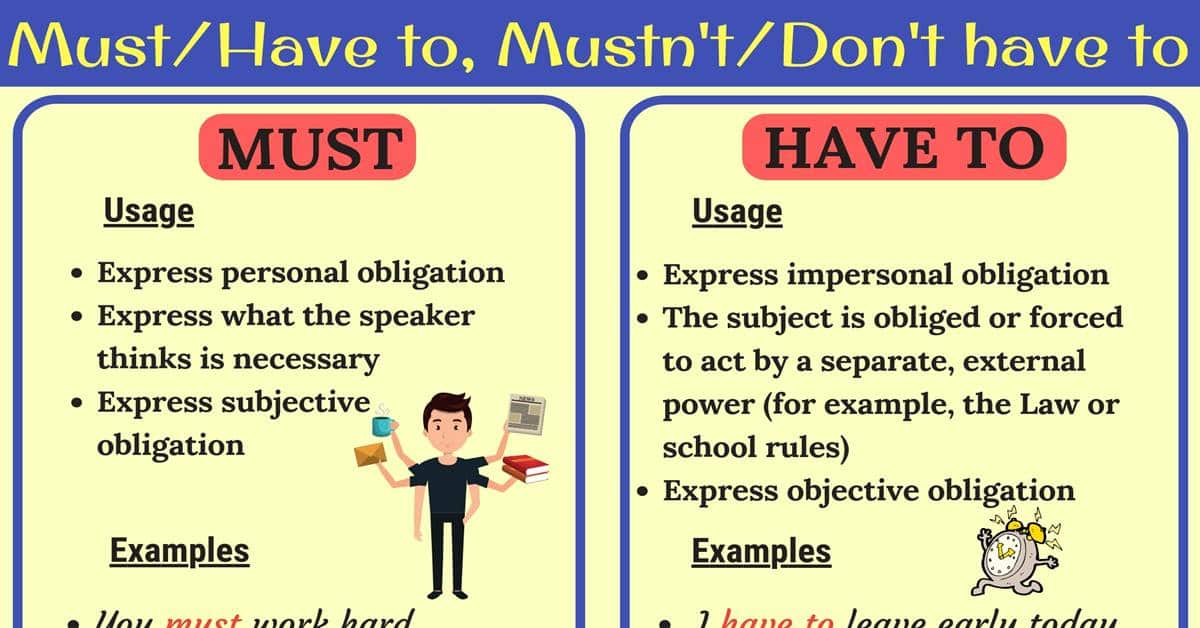
Must vs. Have to Must Not vs. Don’t Have to Efortless English
Must/mustn't, have to/don't have to - Form. Download full-size image from Pinterest. Must/mustn't Use must + infinitive without to. Must is a modal verb, and modal verbs are followed by an infinitive without to.. I must go to the doctor. (NOT I must to go to the doctor.; No -s. Modal verbs don't add -s after he/she/it.. He must come with us. (NOT He must comes with us.

Pin on English Videos Learn English
Explore the BBC. Learn how to talk about obligations in English using 'have to' and 'must'.

Must vs Have To Easy English Conversation Practice Learn English
Use "have to" in the past, present, and future to express responsibility or necessity. NOTE: "have to" is conjugated as a regular verb and therefore requires an auxiliary verb in the question form or negative. We have to get up early. She had to work hard yesterday. They will have to arrive early. Does he have to go? Must Do—Obligations
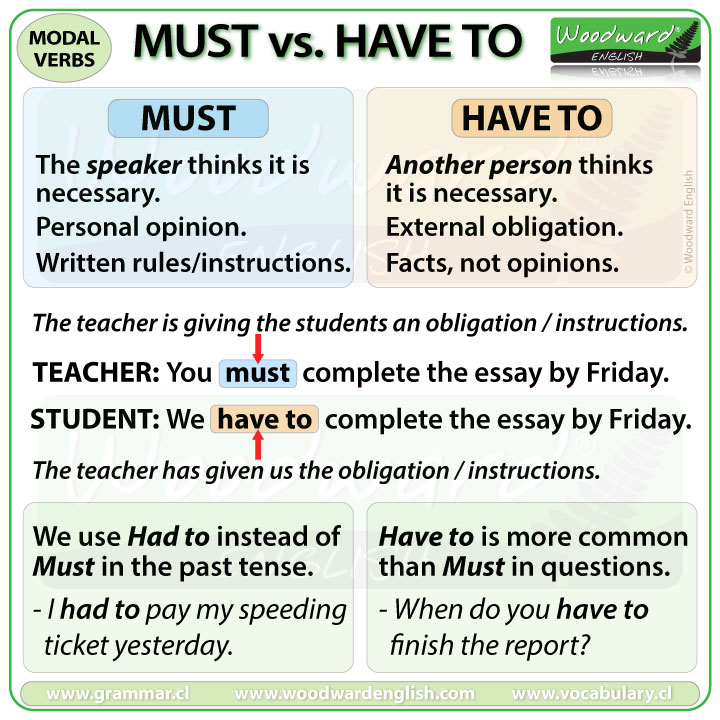
Must vs. Have To Woodward English
No. There's something very important about must and have to. The positive forms are very similar in meaning, but the negative forms are completely different. You mustn't forget. (don't forget - you have no choice)
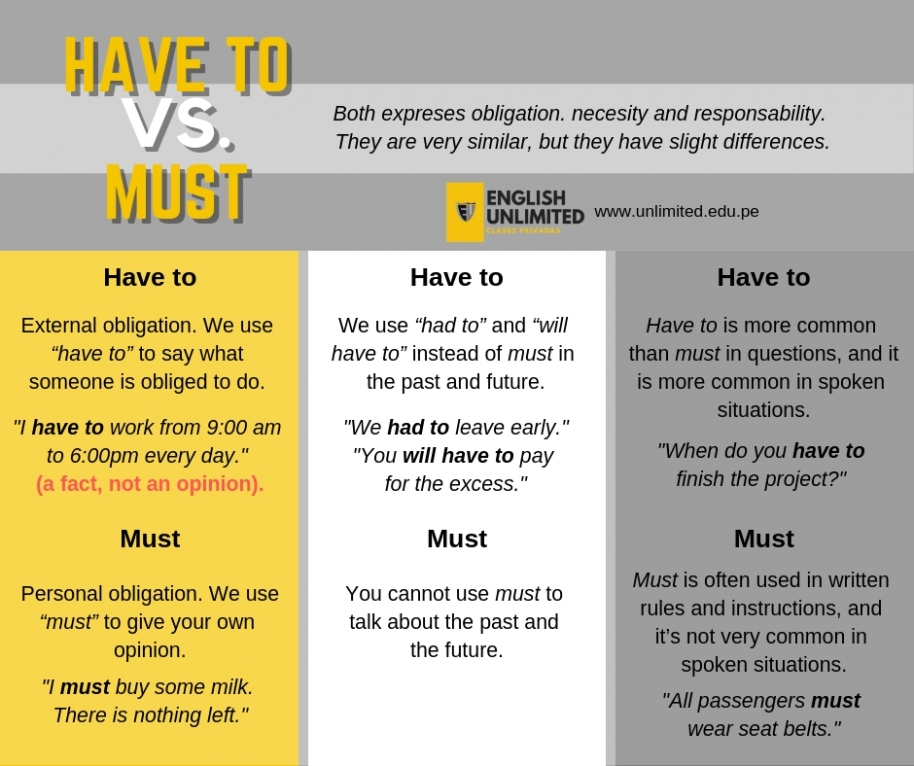
HAVE TO VS. MUST Blog Englih Unlimited
BBC Learning English Home Episodes Clips Listen now 6 Minute Grammar - Have to and must This time Finn and Alice discuss how we talk about obligations in English using 'have to' and must'..

How to use Have to and Must in English YouTube
Must is similar to have to. You can say: It's later than I thought. I must go. or I have to go. You can use must or have to when you give your own opinion (for example, to say what you think is necessary, or to recommend someone to do something): I haven't spoken to Sue for ages. I must phone her.

English grammar must and have to mustn t and don t have to Artofit
A: He falls asleep in class every morning. (fact) B: He must be out late every night or maybe he works at night. (deduction/conclusion) Warning: We use can't/cannot as the negative of must to deny something or make negative deductions or conclusions: It just can't be true. He can't have left his job. That cannot be his sister.

MUST vs HAVE TO Gramática del inglés, Idioma ingles, Gramática
The subject of have to is obliged or forced to act by a separate, external power (for example, the Law or school rules). Have to is objective. Look at these examples: In France, you have to drive on the right. In England, most schoolchildren have to wear a uniform. John has to wear a tie at work.

MUST and HAVE TO difference / A free guide post
Grammar explanation We often use verbs with modal meanings to talk about permission and obligation. Permission can We often use can to ask for and give permission. Can I sit here? You can use my car if you like. Can I make a suggestion? could We also use could to ask for permission (but not to give it). Could is more formal and polite than can.
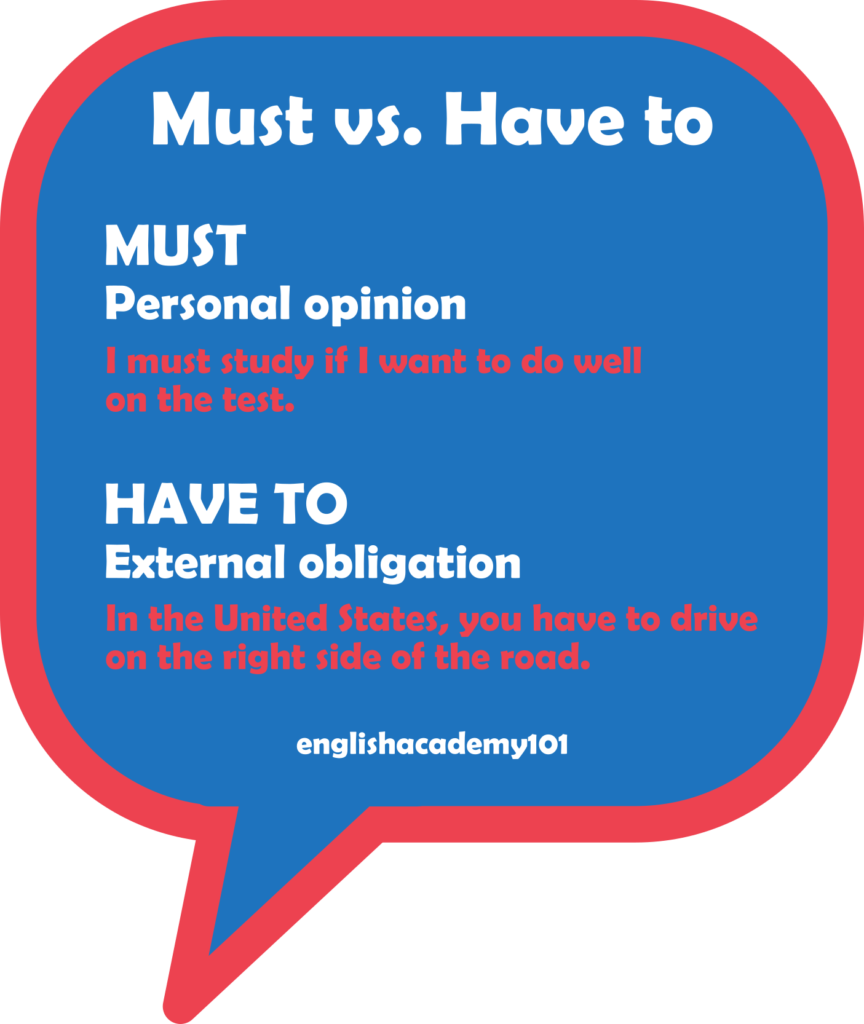
Modals Must vs. Have to in English englishacademy101
Tip! Must and have (got) to are synonymous in this usage. However, there is a subtle difference between them. ' Must ' is used to talk about what the speaker or listener wants, while ' have (got) to ' is used to talk about external obligations, such as rules, deadlines, etc. You must apply for a visa.

Have to and Must general readin… English ESL powerpoints
(What do you think?) Do I have to wear this tie? Am I obliged to wear this tie? (Is there a rule about ties?) • Have to mainly expresses general obligations, while must is used for specific obligations: I have to brush my teeth twice a day. I must tell you something.

Using Must and Have to in English English Study Here
This post has a practice QUIZ, an easy-to-follow Infographic, and lots of natural must and have to examples! Have to and must are both used to show that something is necessary, but there are some differences. HAVE TO can be used in the past tense (HAD TO do something) while MUST can not. The negative forms have different meanings.
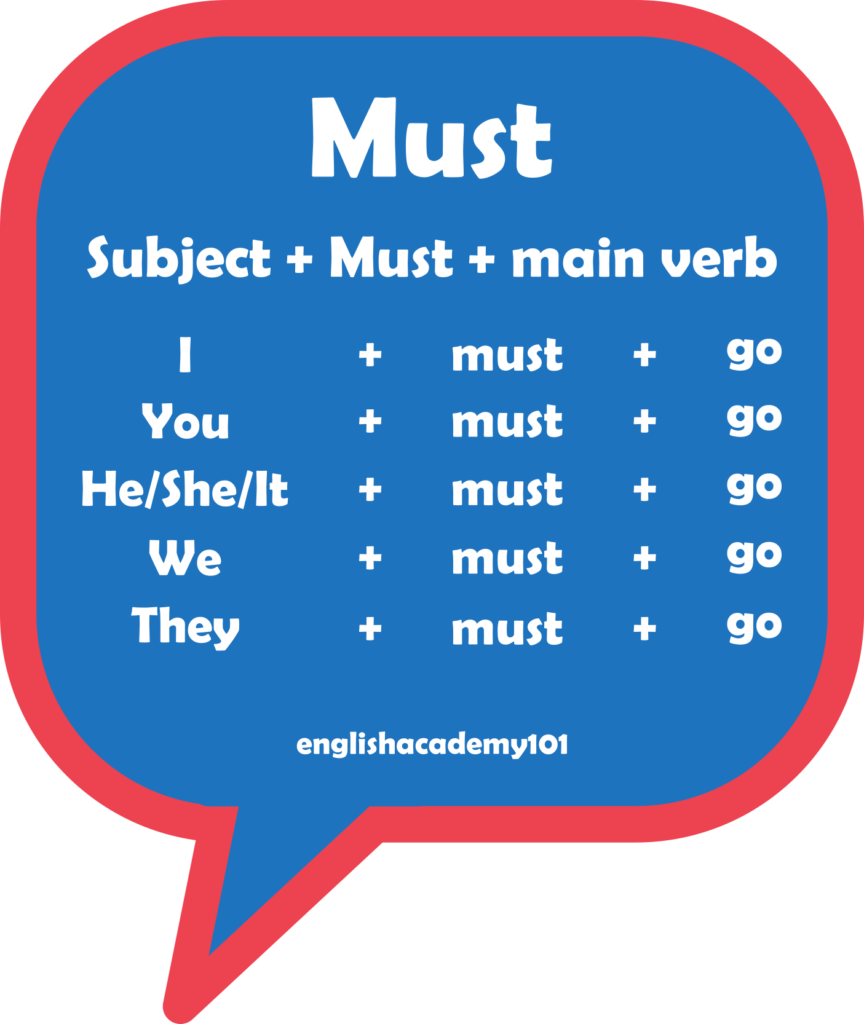
Modals Must vs. Have to in English englishacademy101
Kenneth Beare Updated on January 30, 2019 Many students often confuse the usage of the modals 'must' and 'have to'. While meaning is generally maintained in incorrect usage in the positive forms, a mix-up in the negative forms can cause confusion.

Educational infographic Must vs Have to Your
Must vs. Have to - What is the difference? - English Grammar Lesson Share Watch on In our last lesson, we saw how to use the modal verb MUST in English. Sometimes HAVE TO is used instead of MUST. For example you may hear: I must write a letter to John. OR I have to write a letter to John. What is the difference between MUST and HAVE TO?

Must or Have to? Interactive worksheet
The Grammar Gameshow - Have to and must. Our two contestants find themselves testing all the rules with their knowledge of 'have to' and 'must'! These two little grammar points are all about.

English Grammar Must And Have To, Mustn’t And Don’t Have To
Definition of Must The word 'must' is used to express the compulsion or inevitability of doing something according to the circumstances, which cannot be ignored. It can be used in the following ways: It indicates something which is absolutely necessary, to happen : Some corrections in the Project must be made.